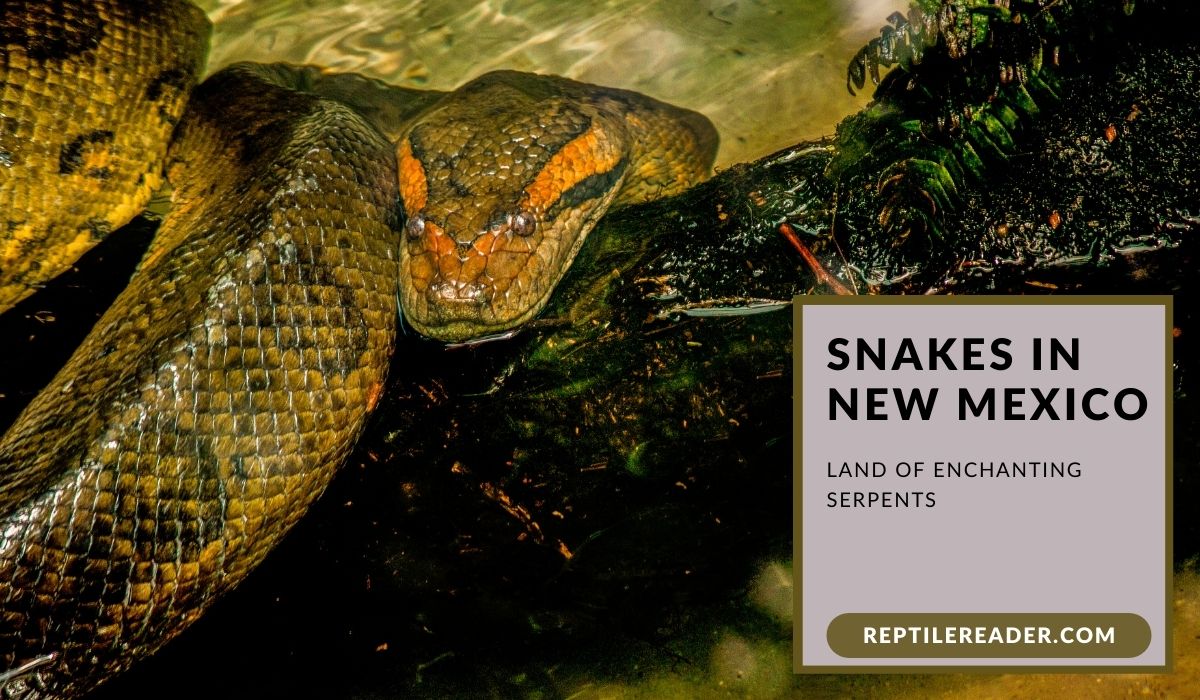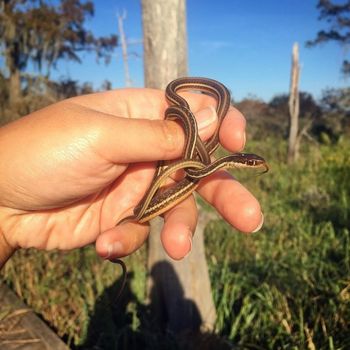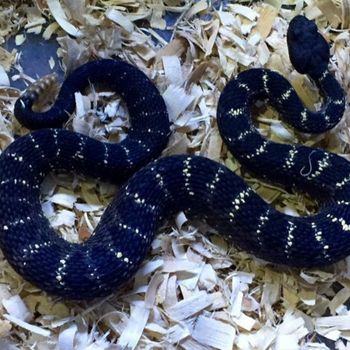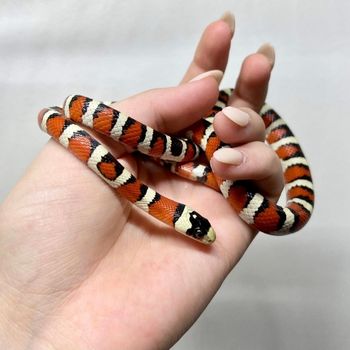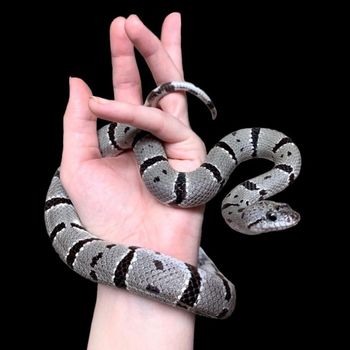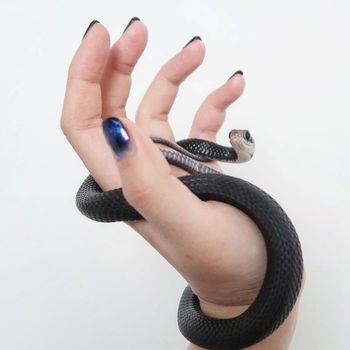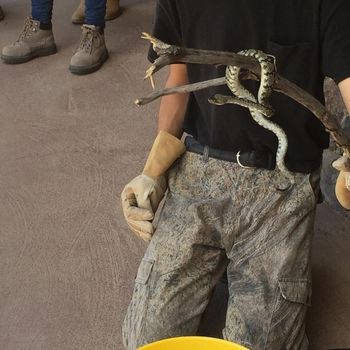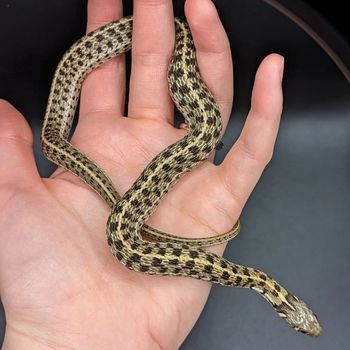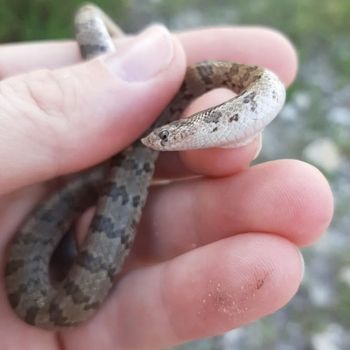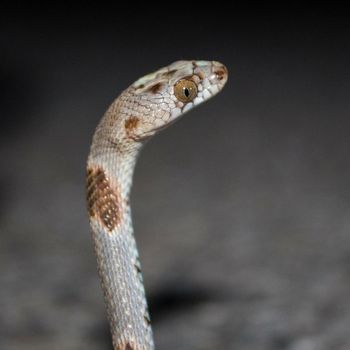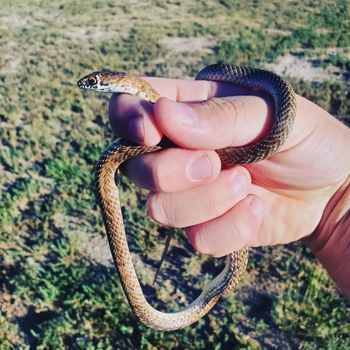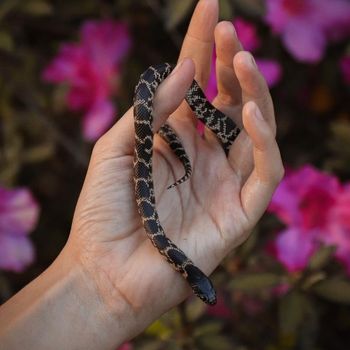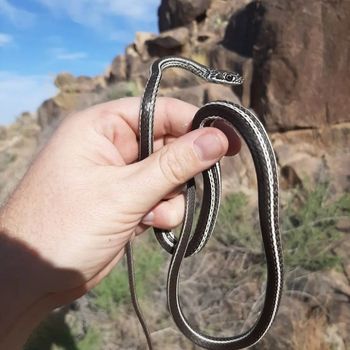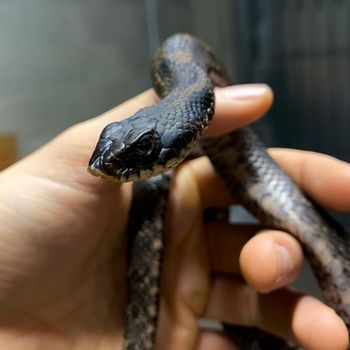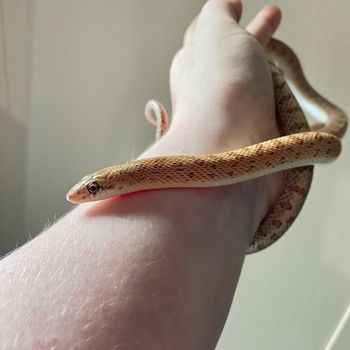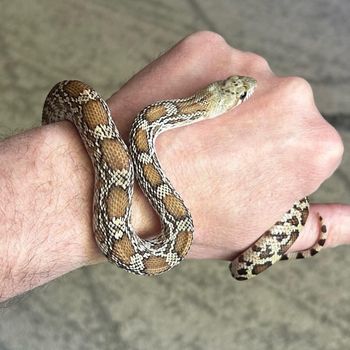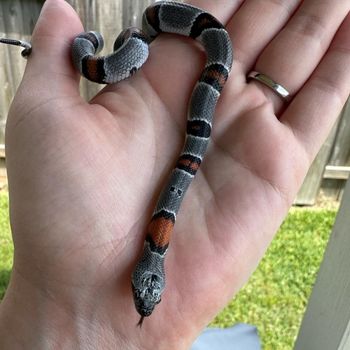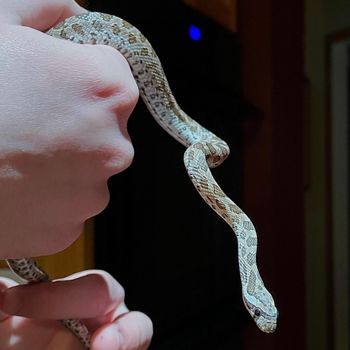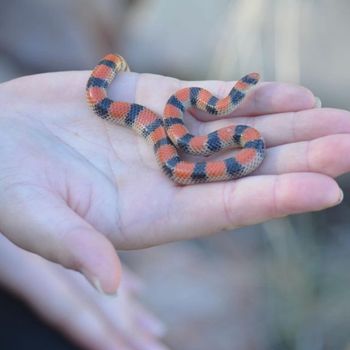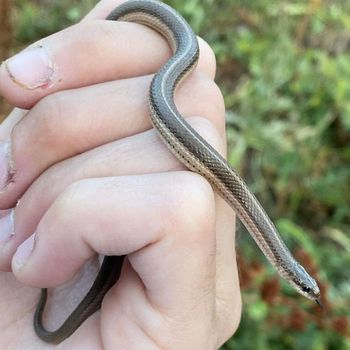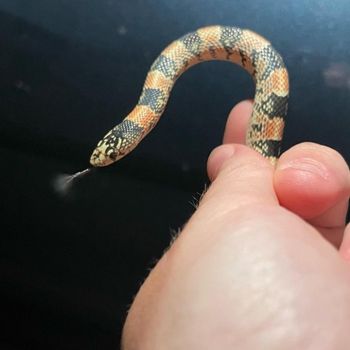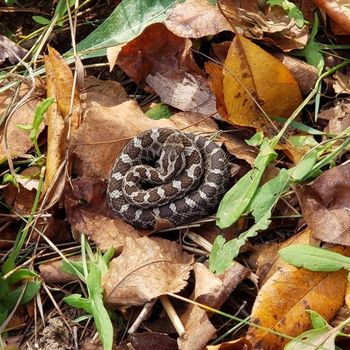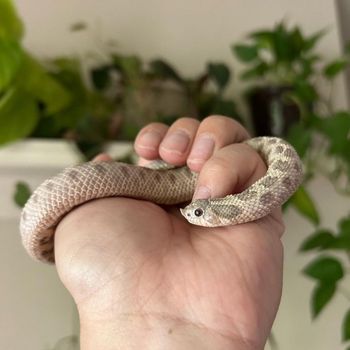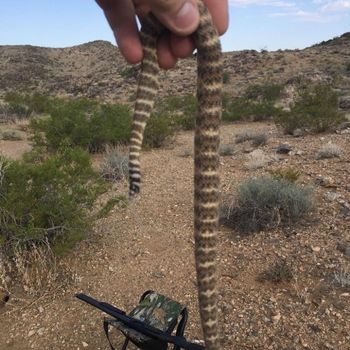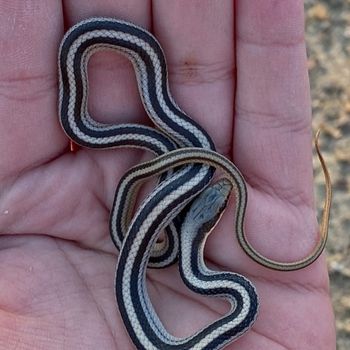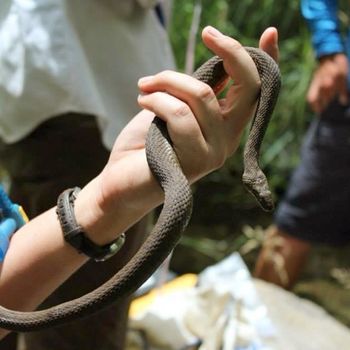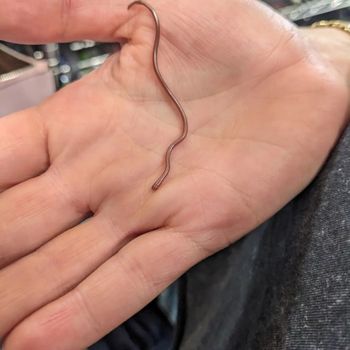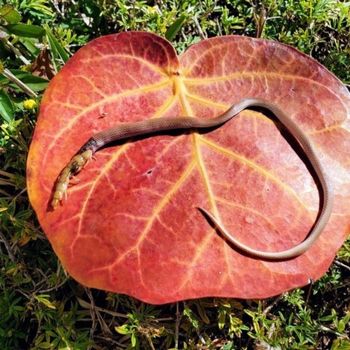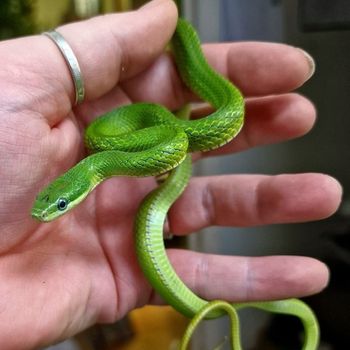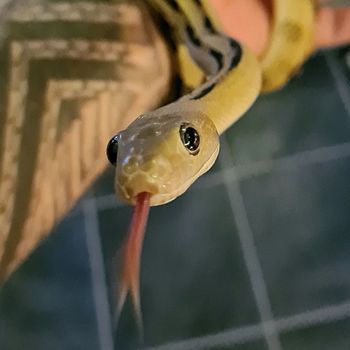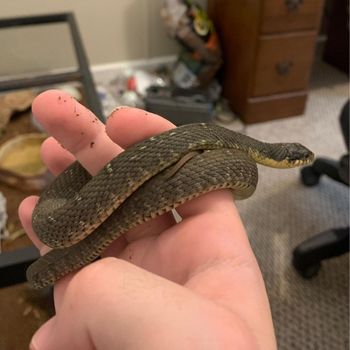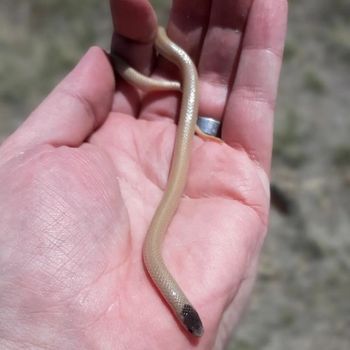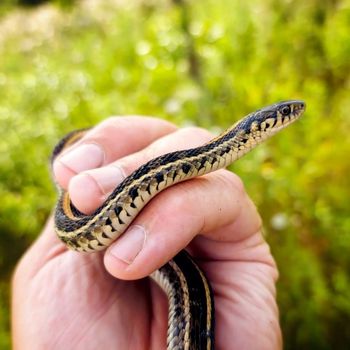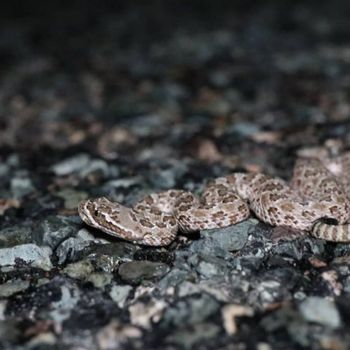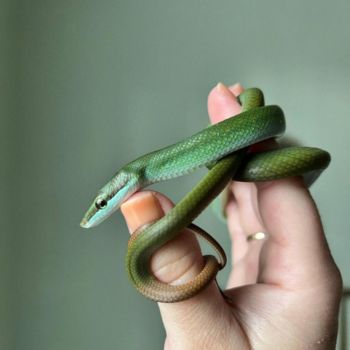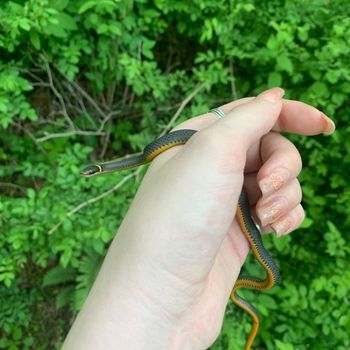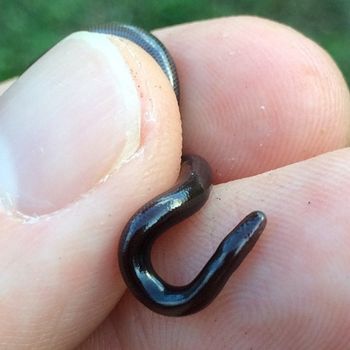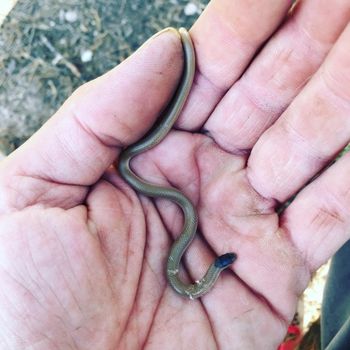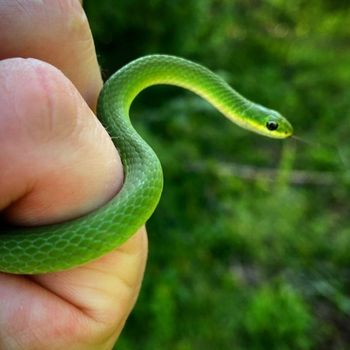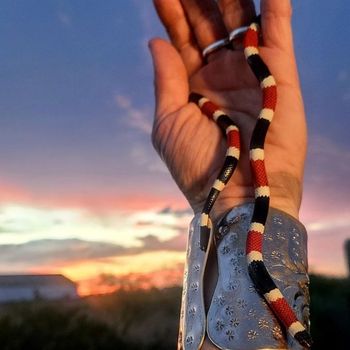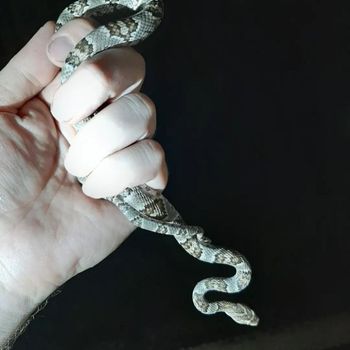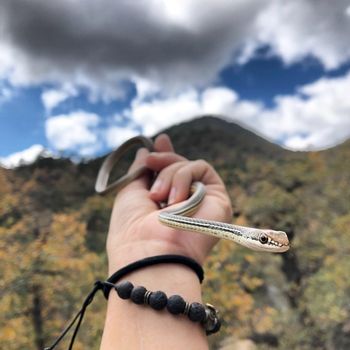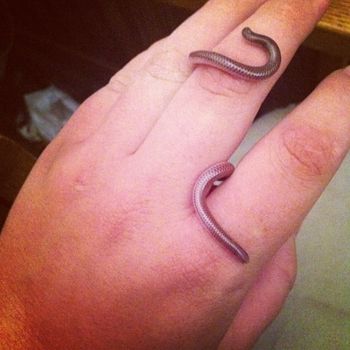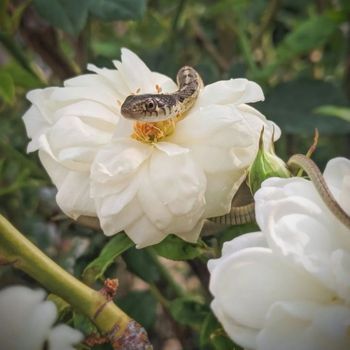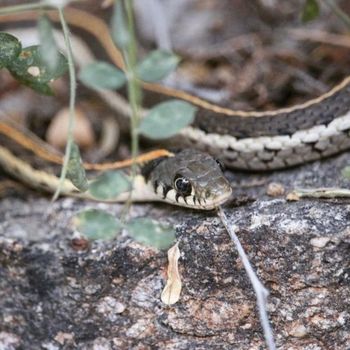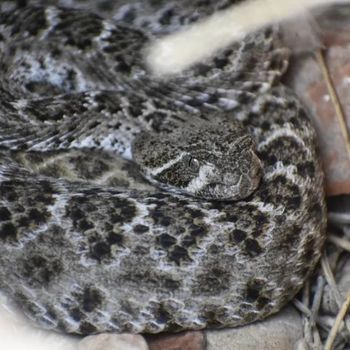Snakes in New Mexico: Land of Enchanting Serpents
You may already know that New Mexico is a veritable paradise when it comes to snake-spotting. With such a diverse landscape, it’s no wonder this area is home to a whopping 50 different species!
Did your jaw just hit the floor? Yeah, ours too! Our slithering friends are truly thriving in the Land of Enchantment. From the venomous to the vibrantly colored, there’s something here for every snake aficionado.
Feeling excited to embark on a snake-seeking journey, but wondering where to start? We’ve got you covered! In this article, we’ll uncover the most fascinating and unique species of snakes living right here in New Mexico, and trust us when we say, this is an adventure you don’t want to miss! If you’re interested in a more exotic snake adventure, consider seeking out the golden serpents in California. These beautiful and elusive creatures are a sight to behold, and the thrill of spotting one in the wild is truly an unforgettable experience. So get ready to grab your gear and embark on a snake-seeking journey of a lifetime!
| # | Name | Details | Image |
| 1 | Arid Land Ribbon Snake (Thamnophis proximus diabolicus) |
| 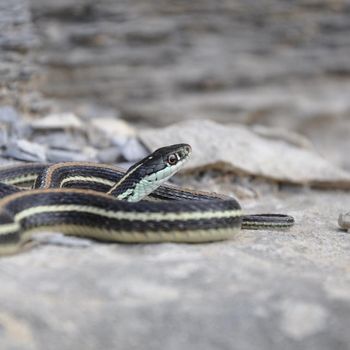 |
| 2 | Arizona Black Rattlesnake (Crotalus cerberus) |
| 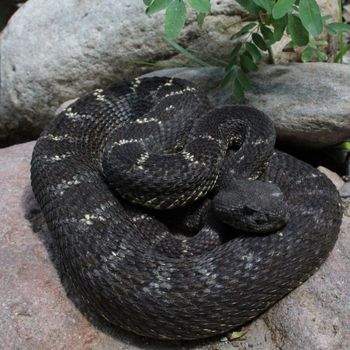 |
| 3 | Sonoran Mountain Kingsnake (Lampropeltis pyromelana) |
| 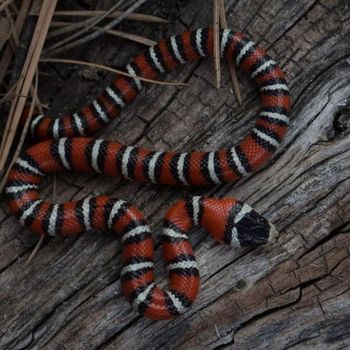 |
| 4 | Banded Rock Rattlesnake (Crotalus lepidus klauberi) |
| 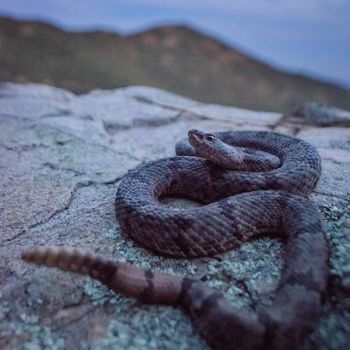 |
| 5 | Black Racer (Coluber constrictor constrictor) |
| 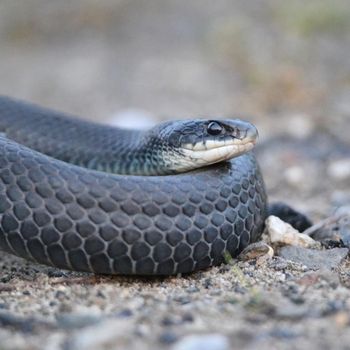 |
| 6 | Northern Blacktail Rattlesnake (Crotalus molossus molossus) |
| 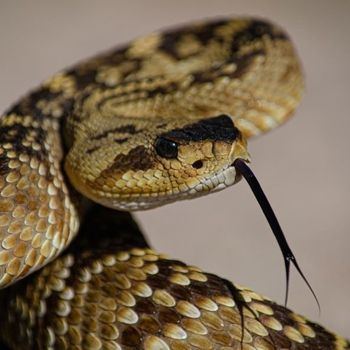 |
| 7 | California Kingsnake (Lampropeltis californiae) |
| 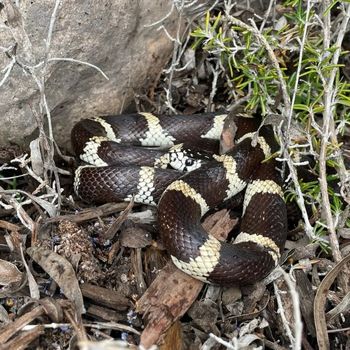 |
| 8 | Checkered Garter Snake (Thamnophis marcianus) |
| 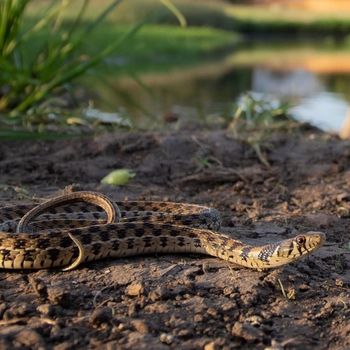 |
| 9 | Chihuahuan Hook-Nosed Snake (Gyalopion canum) |
| 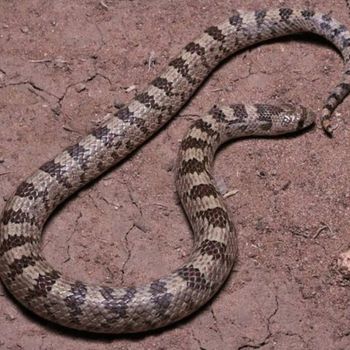 |
| 10 | Texas Lyre Snake (Trimorphodon biscutatus) |
|  |
| 11 | Coachwhip Snake (Masticophis flagellum) |
| 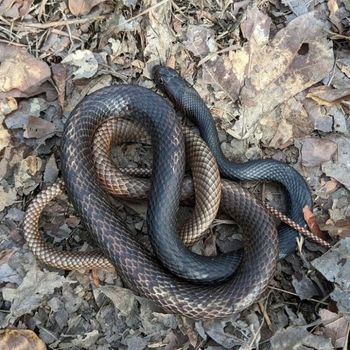 |
| 12 | Desert Kingsnake (Lampropeltis splendida) |
| 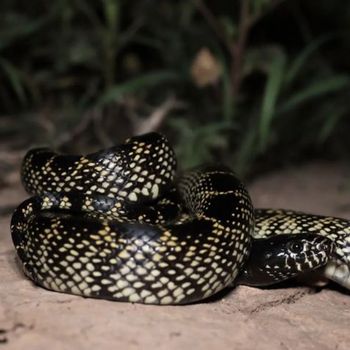 |
| 13 | Desert Striped Whipsnake (Masticophis taeniatus) |
|  |
| 14 | Eastern Hog-nosed Snake (Heterodon platirhinos) |
| 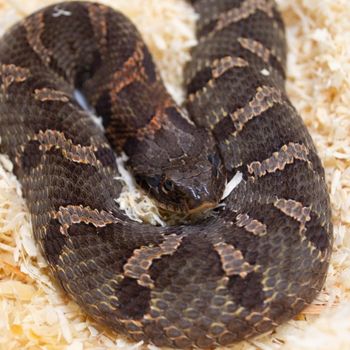 |
| 15 | Mottled Rock Rattlesnake (Crotalus lepidus lepidus) |
| 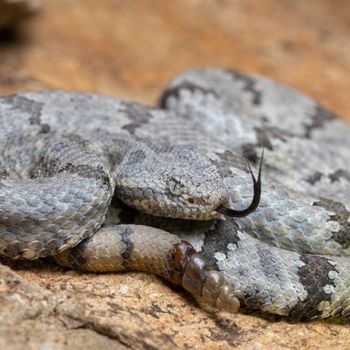 |
| 16 | Glossy Snake (Arizona elegans) |
|  |
| 17 | Gophersnake (Pituophis catenifer) |
| 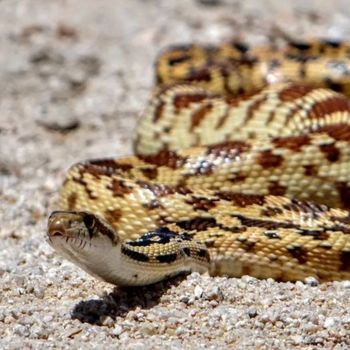 |
| 18 | Grey-banded Kingsnake (Lampropeltis alterna) |
| 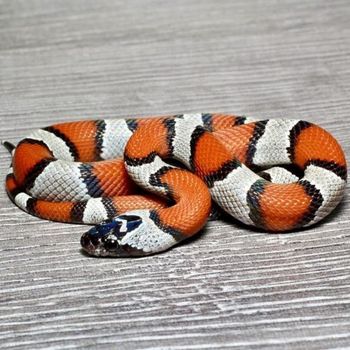 |
| 19 | Great Plains Rat Snake (Pantherophis emoryi) |
| 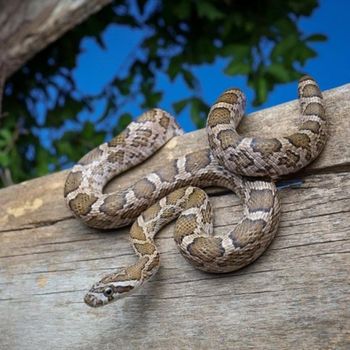 |
| 20 | Ground Snake (Sonora semiannulata) |
| 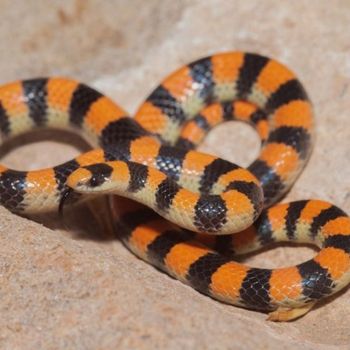 |
| 21 | Lined Snake (Tropidoclonion lineatum) |
| 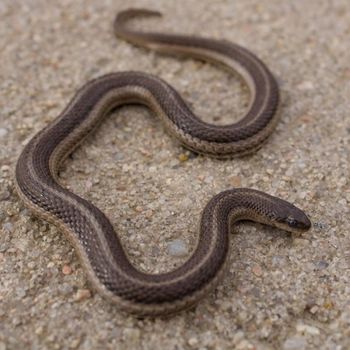 |
| 22 | Long-Nosed Snake (Rhinocheilus lecontei) |
| 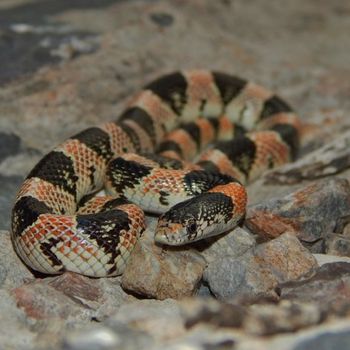 |
| 23 | Massasauga Rattlesnake (Sistrurus catenatus) |
| 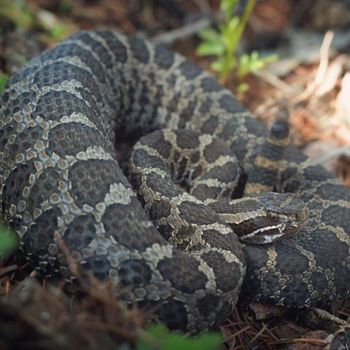 |
| 24 | Mexican Hog-Nosed Snake (Heterodon nasicus kennerlyi) |
| 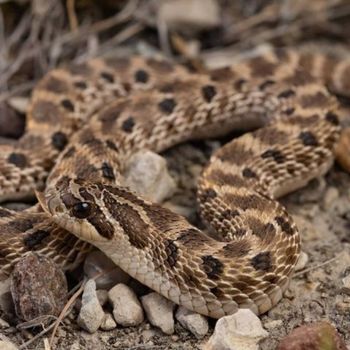 |
| 25 | Mojave Rattlesnake (Crotalus scutulatus) |
| 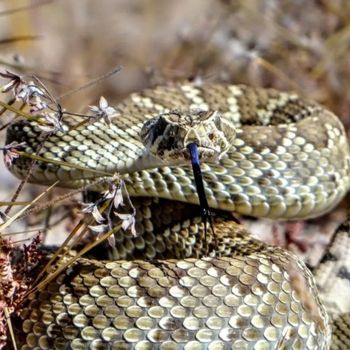 |
| 26 | Mountain Patch Nose Snake (Salvadora grahamiae) |
| 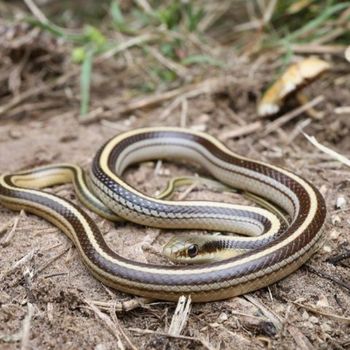 |
| 27 | Narrow-Headed Gartersnake (Thamnophis rufipunctatus) |
| 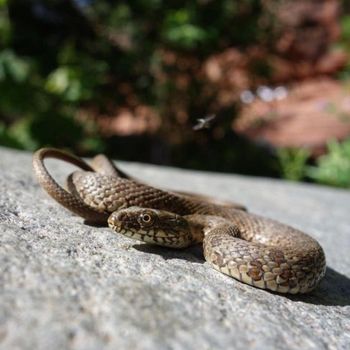 |
| 28 | New Mexico Blind Snake (Rena dissecta) |
| 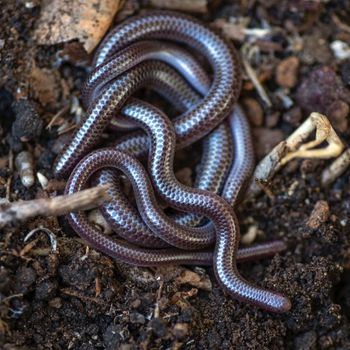 |
| 29 | New Mexico Milksnake (Lampropeltis triangulum celaenops) |
| 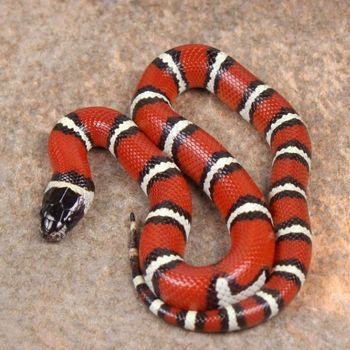 |
| 30 | Rim rock crowned snake (Crotalus willardi obscurus) |
| 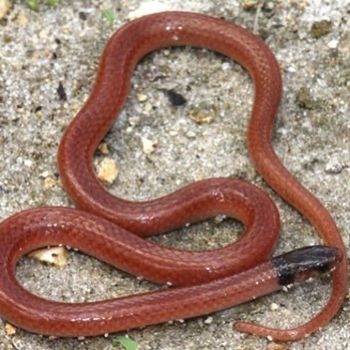 |
| 31 | Green Ratsnake (Senticolis triaspis) |
| 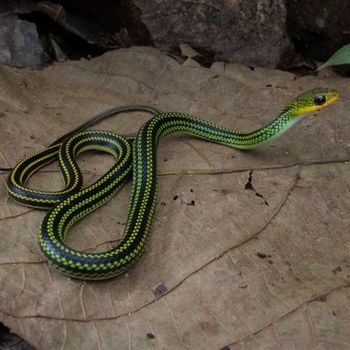 |
| 32 | Trans-Pecos Rat Snake (Bogertophis subocularis) |
| 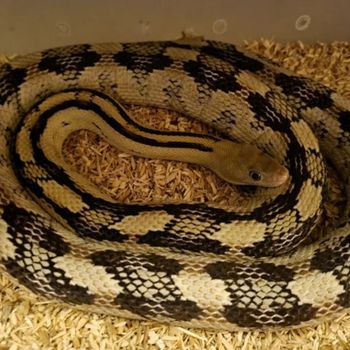 |
| 33 | Plain-bellied Watersnake (Nerodia erythrogaster) |
| 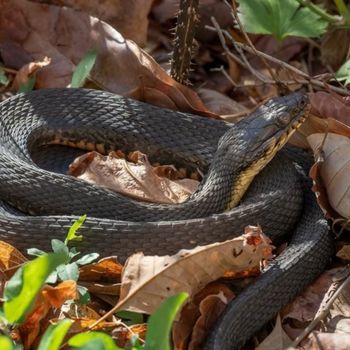 |
| 34 | Plains Black-headed Snake (Tantilla nigriceps) |
| 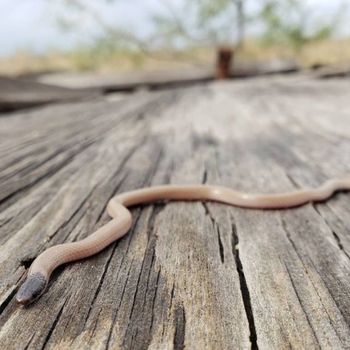 |
| 35 | Plains Garter Snake (Thamnophis radix) |
| 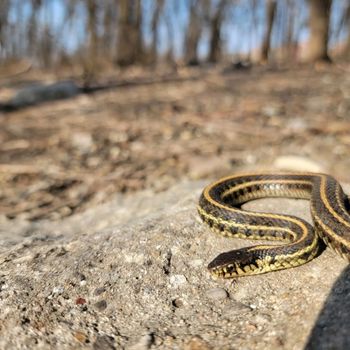 |
| 36 | Plains Hog-nosed Snake (Heterodon nasicus) |
| 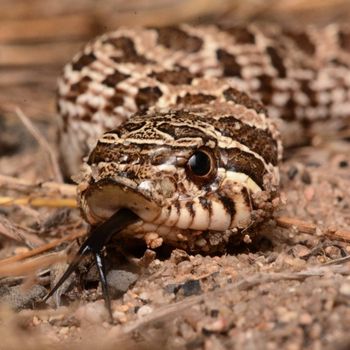 |
| 37 | Prairie Rattlesnake (Crotalus viridis) |
| 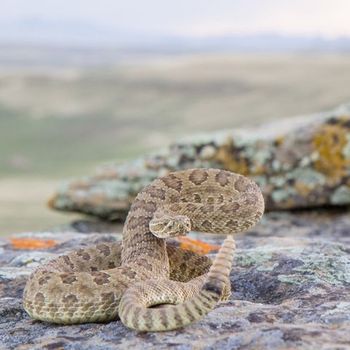 |
| 38 | Red-tailed Green Ratsnake (Gonyosoma oxycephalum) |
| 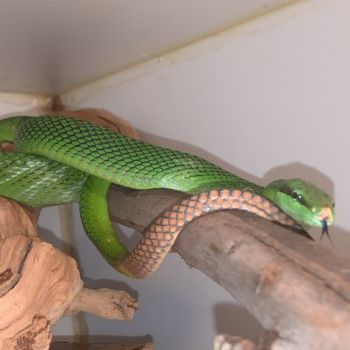 |
| 39 | Ringneck Snake (Diadophis punctatus) |
|  |
| 40 | Brahminy Blind Snake (Indotyphlops braminus) |
| 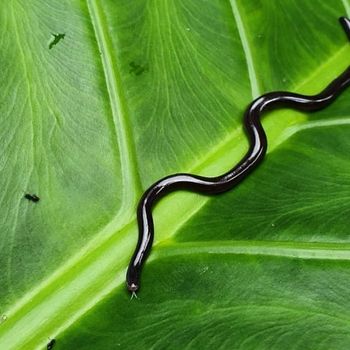 |
| 41 | Smith’s Black-Headed Snake (Tantilla hobartsmithi) |
| 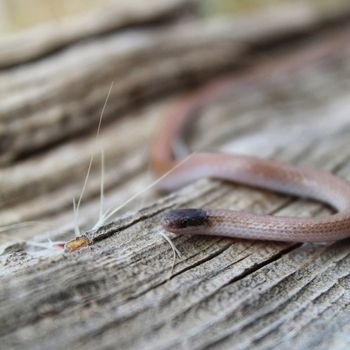 |
| 42 | Smooth Green Snake (Opheodrys vernalis) |
| 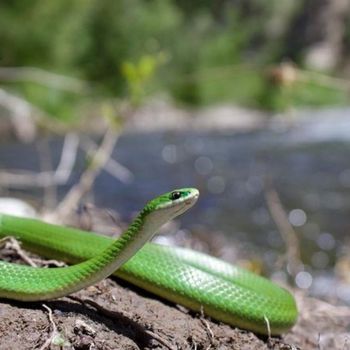 |
| 43 | Sonoran Coral Snake (Micruroides euryxanthus) |
| 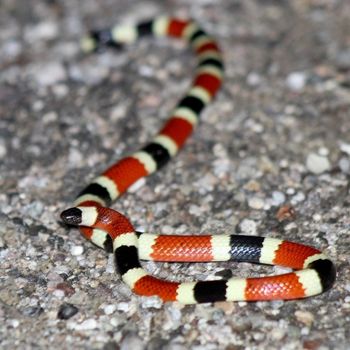 |
| 44 | Sonoran Lyre Snake (Trimorphodon lambda) |
| 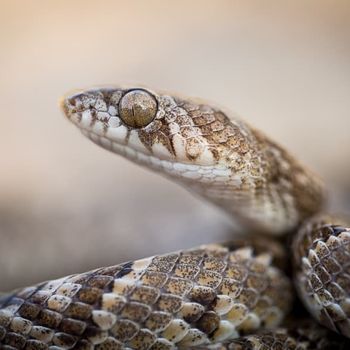 |
| 45 | Sonoran Whipsnake (Masticophis bilineatus) |
| 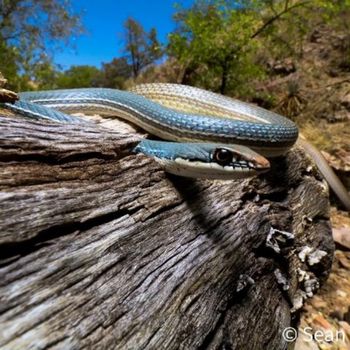 |
| 46 | Texas Night Snake (Hypsiglena jani) |
| 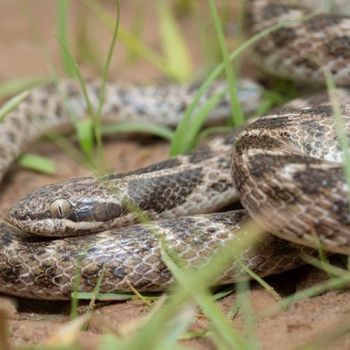 |
| 47 | Trans-Pecos Blind Snake (Leptotyphlops humilis) |
| 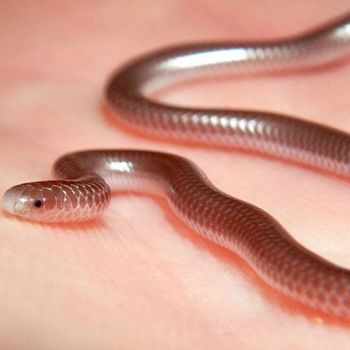 |
| 48 | Wandering Garter Snake (Thamnophis elegans vagrans) |
| 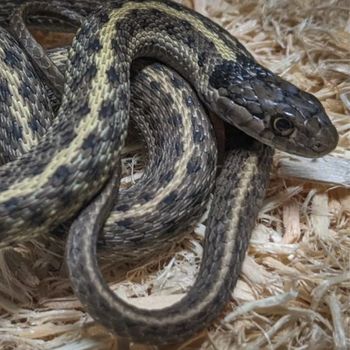 |
| 49 | Western Black-necked Garter Snake (Thamnophis cyrtopsis) |
| 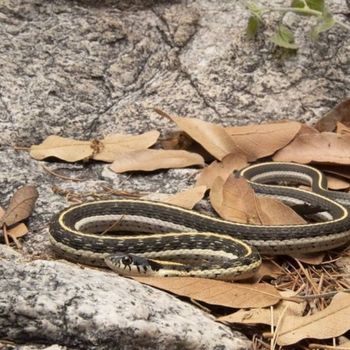 |
| 50 | Western Diamondback Rattlesnake (Crotalus atrox) |
| 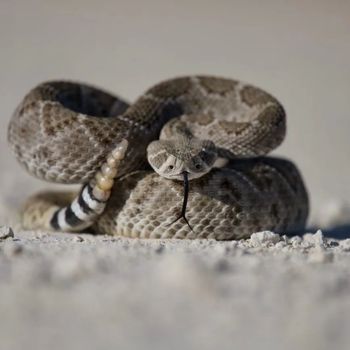 |
50 Snakes You Can Find in New Mexico
In the state of New Mexico, a fascinating array of serpents can be found slithering through its diverse landscapes. From venomous to harmless, each species has its unique story to tell. Below, we’ll explore the wonders of these often misunderstood creatures of New Mexico, from their natural habitats and behaviors to the challenges they face in our changing world. The rattlesnake, in particular, is a common sight in the rocky desert terrain of New Mexico. Despite their fearsome reputation, they play a crucial role in the ecosystem by controlling rodent populations. However, they also face threats from habitat loss and persecution by humans. Interestingly, some people even make a living as snake catchers, earning a snake catcher salary for safely relocating these creatures from urban areas to more suitable habitats in the wild.
1. Arid Land Ribbon Snake
- Scientific Name: Thamnophis proximus diabolicus
- Common Name: Arid land ribbon snake
- Size: Up to 30 inches (76 cm)
- Natural Habitat: Arid and semi-arid habitats, near water sources
- Color: Olive-green or brown with yellowish stripes
- Habitat: Arid and semi-arid habitats, near water sources
- Maximum Size: Up to 30 inches (76 cm)
- Diet: Amphibians, small fish, and invertebrates
- Reproduction: Live-bearing, 3-26 offspring per litter
- Venom: Non-venomous
- Conservation: Least concern
The Arid Land Ribbon Snake (Thamnophis proximus diabolicus) is a non-venomous snake that grows up to 30 inches (76 cm) long. It has an olive-green or brown coloration, adorned with yellowish stripes. Inhabitants of arid and semi-arid regions, these snakes reside near water sources due to their semi-aquatic and diurnal nature. Their diet consists mainly of amphibians, small fish, and invertebrates that roams in the state of New Mexico. The Arid Land Ribbon Snake is a live-bearing species, producing 3-26 offspring per litter. It is currently classified as “Least Concern” in conservation status.
2. Arizona Black Rattlesnake
- Scientific Name: Crotalus cerberus
- Common Name: Arizona black rattlesnake
- Size: Up to 5 feet (1.5 meters)
- Natural Habitat: Forests, woodlands, and rocky terrain
- Color: Black or dark gray with black bands
- Habitat: Forests, woodlands, and rocky terrain
- Maximum Size: Up to 5 feet (1.5 meters)
- Diet: Small mammals, lizards, and birds
- Reproduction: Ovoviviparous, giving birth to live young with 5-15 offspring
- Venom: Hemotoxic venom
- Conservation: Least concern
The Arizona Black Rattlesnake (Crotalus cerberus) is a large reptile that can reach up to 5 feet (1.5 meters) in length. Boasting a black or dark gray coloration with black bands, this species thrives in forests, woodlands, and rocky terrain of New Mexico. They are solitary predators and feed on small mammals, lizards, and birds. During winter, they hibernate in groups. The ovoviviparous rattlesnake gives birth to 5-15 live young and possesses hemotoxic venom. Currently, their conservation status is classified as “Least Concern.”
3. Sonoran Mountain Kingsnake
- Scientific Name: Lampropeltis pyromelana
- Common Name: Sonoran mountain kingsnake
- Size: Up to 3 feet (0.9 meters)
- Natural Habitat: Forests or rocky hillsides, often near water sources
- Color: Bright red, black, and white bands
- Habitat: Forests or rocky hillsides, often near water sources
- Maximum Size: Up to 3 feet (0.9 meters)
- Diet: Rodents, lizards, frogs, and other snakes
- Reproduction: Lay eggs in clutches of 3-12
- Venom: Non-venomous
- Conservation: Least concern
The Sonoran Mountain Kingsnake, scientifically known as Lampropeltis pyromelana, is a non-venomous reptile that can grow up to 3 feet (0.9 meters) in length. This striking snake is easily identifiable by its bright red, black, and white bands. Found in forests or rocky hillsides close to water sources, it is nocturnal and secretive by nature. Its diet consists of rodents, lizards, frogs, and other snakes. The species lays eggs in clutches of 3-12 and has a conservation status of least concern.
4. Banded Rock Rattlesnake
- Scientific Name: Crotalus lepidus klauberi
- Common Name: Banded rock rattlesnake
- Size: 16-33 inches (40-84 cm)
- Natural Habitat: Rocky habitats, including canyons, cliffs, and slopes
- Color: Gray or blue-gray with dark bands
- Habitat: Rocky habitats, including canyons, cliffs, and slopes
- Maximum Size: 16-33 inches (40-84 cm)
- Diet: Small mammals, lizards, and birds
- Reproduction: Viviparous, 2-8 offspring per litter
- Venom: Venomous, but not considered highly dangerous to humans
- Conservation: Least concern
The Banded Rock Rattlesnake (Crotalus lepidus klauberi) is a venomous snake of New Mexico measuring 16-33 inches (40-84 cm) in length. These nocturnal reptiles exhibit a gray or blue-gray color with distinct dark bands on their scales. They inhabit rocky terrains such as canyons, cliffs, and slopes, feeding primarily on small mammals, lizards, and birds. As viviparous snakes, they give live birth to 2-8 offspring per litter. Though venomous, their bites are not highly dangerous to humans, and their conservation status is listed as Least Concern.
5. Black Racer
- Scientific Name: Coluber constrictor constrictor
- Common Name: Black racer
- Size: Up to 6 feet (1.8 meters)
- Natural Habitat: Various habitats, including forests, grasslands, and urban areas
- Color: Solid black with white chin
- Habitat: Various habitats, including forests, grasslands, and urban areas
- Maximum Size: Up to 6 feet (1.8 meters)
- Diet: Rodents, lizards, frogs, and insects
- Reproduction: Lay eggs in clutches of 12-30
- Venom: Non-venomous
- Conservation: Least concern
The Black Racer (Coluber constrictor constrictor) is a non-venomous snake species of New Mexico reaching up to 6 feet (1.8 meters) in length, featuring a solid black coloration and a striking white chin. It thrives in an array of habitats, including forests, grasslands, and urban areas. As a diurnal and swift-moving snake, it feeds on rodents, lizards, frogs, and insects. They reproduce by laying eggs in clutches of 12-30, and are currently designated as a species of least concern in terms of conservation status.
6. Northern Blacktail Rattlesnake
- Scientific Name: Crotalus molossus molossus
- Common Name: Northern blacktail rattlesnake
- Size: 24-42 inches (61-107 cm)
- Natural Habitat: Mountainous habitats, pine-oak woodlands, and grasslands
- Color: Brown or gray with dark bands and a black tail
- Habitat: Mountainous habitats, pine-oak woodlands, and grasslands
- Maximum Size: 24-42 inches (61-107 cm)
- Diet: Small mammals, birds, and lizards
- Reproduction: Live-bearing; 3-12 offspring per litter
- Venom: Venomous, but not considered highly dangerous to humans
- Conservation: Least concern
The Northern Blacktail Rattlesnake (Crotalus molossus molossus) is a moderately-sized venomous snake, ranging from 24-42 inches (61-107 cm) in length. It displays a distinct brown or gray coloration, featuring dark bands and a black tail. Inhabiting mountainous regions, pine-oak woodlands, and grasslands, this nocturnal rattlesnake acts as an ambush predator, hunting small mammals, birds, and lizards. Northern Blacktails are live-bearing, producing 3-12 offspring per litter. Although venomous, they pose minimal danger to humans and have a conservation status of “Least Concern.”
7. California Kingsnake
- Scientific Name: Lampropeltis californiae
- Common Name: California kingsnake
- Size: Up to 4 feet (1.2 meters)
- Natural Habitat: Various habitats, including forests, grasslands, and deserts
- Color: Black or brown with white or yellow bands
- Habitat: Various habitats, including forests, grasslands, and deserts
- Maximum Size: Up to 4 feet (1.2 meters)
- Diet: Rodents, birds, reptiles, and amphibians
- Reproduction: Lay eggs in clutches of 3-24
- Venom: Non-venomous
- Conservation: Least concern
The California Kingsnake (Lampropeltis californiae) is a non-venomous snake found throughout California’s diverse habitats, such as forests, grasslands, and deserts. They can grow up to 4 feet (1.2 meters) in length and are usually black or brown with white or yellow bands. Being nocturnal and terrestrial, they mainly feed on rodents, birds, reptiles, and amphibians. These snakes reproduce by laying egg clutches ranging from 3 to 24 eggs. Fortunately, their conservation status is classified as “Least Concern.”
8. Checkered Garter Snake
- Scientific Name: Thamnophis marcianus
- Common Name: Checkered garter snake
- Size: 18-42 inches (46-106 cm)
- Natural Habitat: Near water sources, grasslands, and woodlands
- Color: Olive, brown, or black with checkered pattern
- Habitat: Near water sources, grasslands, and woodlands
- Maximum Size: 18-42 inches (46-106 cm)
- Diet: Earthworms, amphibians, and small fish
- Reproduction: Live-bearing, 5-40 offspring per litter
- Venom: Mildly venomous, not harmful to humans
- Conservation: Least concern
Introducing the Checkered Garter Snake (Thamnophis marcianus), a stunning serpent dressed in olive, brown, or black with an eye-catching checkered pattern. This slithering beauty, measuring 18-42 inches (46-106 cm), loves to hang out near water sources, grasslands, and woodlands. As a diurnal and semi-aquatic creature, it feasts on earthworms, amphibians, and small fish. Fear not, as their mildly venomous bite is harmless to humans. These live-bearing reptiles can produce 5-40 offspring per litter. Currently, their conservation status is of least concern.
9. Chihuahuan Hook-Nosed Snake
- Scientific Name: Gyalopion canum
- Common Name: Chihuahuan hook-nosed snake
- Size: Up to 15 inches (38 centimeters)
- Natural Habitat: Deserts, scrublands, and rocky slopes
- Color: Gray or beige with dark bands
- Habitat: Deserts, scrublands, and rocky slopes
- Maximum Size: Up to 15 inches (38 centimeters)
- Diet: Centipedes, spiders, and insects
- Reproduction: Lay eggs in clutches of 2-4
- Venom: Mildly venomous but not dangerous to humans
- Conservation: Least concern
The Chihuahuan Hook-Nosed Snake (Gyalopion canum) is a small, mildly venomous yet harmless reptile, reaching up to 15 inches (38cm) in length. Identified by its gray or beige coloration with dark bands, this nocturnal and fossorial species is native to deserts, scrublands, and rocky slopes . Their primary diet consists of centipedes, spiders, and insects that are commonly found in New Mexico. As for reproduction, they lay eggs in small clutches of 2-4. With a conservation status of “least concern,” their population levels remain relatively stable.
10. Texas Lyre Snake
- Scientific Name: Trimorphodon biscutatus
- Common Name: Texas lyre snake
- Size: Up to 3.3 feet (1 meter)
- Natural Habitat: Rocky habitats, including canyons, hillsides, and outcrops
- Color: Gray or tan with dark blotches
- Habitat: Rocky habitats, including canyons, hillsides, and outcrops
- Maximum Size: Up to 3.3 feet (1 meter)
- Diet: Lizards, small mammals, birds, and amphibians
- Reproduction: Lay eggs in clutches of 3-10
- Venom: Mildly venomous, not harmful to humans
- Conservation: Least concern
Trimorphodon biscutatus, commonly known as the Texas Lyre Snake, is a gray or tan snake with dark blotches, reaching up to 3.3 feet (1 meter) in length. Found in rocky habitats like canyons, hillsides, and outcrops, this nocturnal and terrestrial reptile has a diet consisting of lizards, small mammals, birds, and amphibians. The snake reproduces by laying eggs in clutches of 3-10. Although mildly venomous, its venom is not harmful to humans. Its conservation status is currently classified as “least concern.”
11. Coachwhip Snake
- Scientific Name: Masticophis flagellum
- Common Name: Coachwhip snake
- Size: Up to 8 feet (2.4 meters)
- Natural Habitat: Deserts, grasslands, and woodlands
- Color: Variety of colors, including tan, brown, pink, and black
- Habitat: Deserts, grasslands, and woodlands
- Maximum Size: Up to 8 feet (2.4 meters)
- Diet: Lizards, small mammals, birds
- Reproduction: Lay eggs in clutches of 3-15
- Venom: Non-venomous
- Conservation: Least concern
The Coachwhip Snake, scientifically known as Masticophis flagellum, is a swift, diurnal serpent native to deserts, grasslands, and woodlands. Growing up to 8 feet (2.4 meters) long, this non-venomous snake displays a variety of colors, from tan, brown, pink, to black. As adept hunters, Coachwhip Snakes primarily feed on lizards, small mammals, and birds. Mating leads to egg clutches ranging from 3-15. Despite their striking appearance, their conservation status remains classified as least concern.
12. Desert Kingsnake
- Scientific Name: Lampropeltis splendida
- Common Name: Desert kingsnake
- Size: 3-4 feet (0.9-1.2 meters)
- Natural Habitat: Deserts, grasslands, and scrublands
- Color: Black or dark brown with yellow or white bands
- Habitat: Deserts, grasslands, and scrublands
- Maximum Size: 3-4 feet (0.9-1.2 meters)
- Diet: Rodents, birds, eggs, and other reptiles
- Reproduction: Lay eggs in clutches of 3-13
- Venom: Non-venomous
- Conservation: Not evaluated (species is not assessed on the iucn red list)
The Desert Kingsnake (Lampropeltis splendida) is a non-venomous reptile, typically measuring 3-4 feet (0.9-1.2 meters) in length. It has a striking appearance with black or dark brown scales, adorned with yellow or white bands. These nocturnal, terrestrial snakes inhabit deserts, grasslands, and scrublands, often remaining secretive. They primarily feast on rodents, birds, eggs, and other reptiles. Desert Kingsnakes reproduce by laying eggs in clutches of 3-13. Currently, their conservation status is not evaluated on the IUCN Red List.
13. Desert Striped Whipsnake
- Scientific Name: Masticophis taeniatus
- Common Name: Desert striped whipsnake
- Size: 24-67 inches (60-170 cm)
- Natural Habitat: Deserts, grasslands, and woodlands
- Color: Light gray or brown with dark stripes
- Habitat: Deserts, grasslands, and woodlands
- Maximum Size: 24-67 inches (60-170 cm)
- Diet: Lizards, small mammals, and birds
- Reproduction: Lay eggs in clutches of 3-12
- Venom: Non-venomous
- Conservation: Least concern
The Desert Striped Whipsnake (Masticophis taeniatus) is a slender, non-venomous snake measuring 24-67 inches in length, with a light gray or brown color and distinct dark stripes. It inhabits deserts, grasslands, and woodlands of New Mexico and is notable for its diurnal and semi-arboreal behavior. The whipsnake primarily feeds on lizards, small mammals, and birds. In terms of reproduction, females lay eggs in clutches of 3-12. Currently, the species holds a conservation status of Least Concern.
14. Eastern Hog-nosed Snake
- Scientific Name: Heterodon platirhinos
- Common Name: Eastern hog-nosed snake
- Size: 20-33 inches (51-84 cm)
- Natural Habitat: Woodlands, grasslands, and sandy areas
- Color: Highly variable, typically brown or gray with dark blotches
- Habitat: Woodlands, grasslands, and sandy areas
- Maximum Size: 20-33 inches (51-84 cm)
- Diet: Mostly toads, but also other amphibians and small mammals
- Reproduction: Lay eggs, 4-60 per clutch
- Venom: Mild venom, harmless to humans
- Conservation: Least concern
The Eastern Hog-nosed Snake (Heterodon platirhinos) is a moderately-sized serpent, reaching lengths of 20-33 inches (51-84 cm). Its coloration is highly variable, typically exhibiting brown or gray hues with dark blotches. Inhabiting woodlands, grasslands, and sandy areas, this diurnal snake is known for playing dead when threatened. Its diet mainly consists of toads, along with other amphibians and small mammals. It reproduces by laying 4-60 eggs per clutch, has mild venom harmless to humans, and is classified as of “Least Concern” in conservation efforts.
15. Mottled Rock Rattlesnake
- Scientific Name: Crotalus lepidus lepidus
- Common Name: Mottled rock rattlesnake
- Size: 16-30 inches (40-76 cm)
- Natural Habitat: Rocky habitats, including canyons and mountain slopes
- Color: Gray or brown with dark bands and mottled pattern
- Habitat: Rocky habitats, including canyons and mountain slopes
- Maximum Size: 16-30 inches (40-76 cm)
- Diet: Small mammals, birds, lizards, and amphibians
- Reproduction: Live-bearing; 2-12 offspring per litter
- Venom: Venomous, but not considered dangerous to humans due to low venom yield
- Conservation: Least concern
The Mottled Rock Rattlesnake (Crotalus lepidus lepidus) is a small, nocturnal snake, measuring 16-30 inches (40-76 cm) in length. Its gray or brown coloration, adorned with dark bands and a mottled pattern, enables it to blend seamlessly into its rocky habitats such as canyons and mountain slopes. Despite its venomous nature, its low venom yield prevents it from being a significant threat to humans. The species feeds on small mammals, birds, lizards, and amphibians, and is a live-bearing snake with 2-12 offspring per litter. Its conservation status is listed as ‘Least Concern.’
16. Glossy Snake
- Scientific Name: Arizona elegans
- Common Name: Glossy snake
- Size: Up to 5 feet (1.5 meters)
- Natural Habitat: Desert, grassland, and scrub habitats
- Color: Gray or brown with dark blotches
- Habitat: Desert, grassland, and scrub habitats
- Maximum Size: Up to 5 feet (1.5 meters)
- Diet: Small mammals, lizards, and snakes
- Reproduction: Lay eggs in clutches of 3-12
- Venom: Non-venomous
- Conservation: Least concern
The Glossy Snake (Arizona elegans) is a non-venomous, nocturnal reptile found in desert, grassland, and scrub habitats across North America. Measuring up to 5 feet (1.5 meters) in length, this resident of New Mexico boasts a gray or brown coloration with dark blotches. As a terrestrial creature, the Glossy Snake feeds on small mammals, lizards, and other snakes, and reproduces by laying egg clutches of 3 to 12. With a conservation status of ‘least concern’, it continues to thrive in its native regions.
17. Gophersnake
- Scientific Name: Pituophis catenifer
- Common Name: Gophersnake
- Size: Up to 7 feet (2.1 meters)
- Natural Habitat: Deserts, grasslands, forests, and agricultural areas
- Color: Yellow, brown, or cream with dark spots
- Habitat: Deserts, grasslands, forests, and agricultural areas
- Maximum Size: Up to 7 feet (2.1 meters)
- Diet: Mammals, birds, eggs, and reptiles
- Reproduction: Lay eggs in clutches of 2-24
- Venom: Non-venomous
- Conservation: Least concern
The Gophersnake (Pituophis catenifer) is a non-venomous snake species measuring up to 7 feet (2.1 meters) in length. They exhibit yellow, brown, or cream-colored scales with dark spots. Gophersnakes thrive in various habitats such as deserts, grasslands, forests, and agricultural areas. These diurnal, burrow-dwelling reptiles primarily feed on mammals, birds, eggs, and other reptiles. Gophersnakes reproduce through laying egg clutches, consisting of 2-24 eggs. Currently, they have a conservation status of least concern.
18. Grey-banded Kingsnake
- Scientific Name: Lampropeltis alterna
- Common Name: Grey-banded kingsnake
- Size: 2-4 feet (61-122 cm)
- Natural Habitat: Rocky habitats, desert scrub, and semi-arid regions
- Color: Gray or brown with red or orange bands
- Habitat: Rocky habitats, desert scrub, and semi-arid regions
- Maximum Size: 2-4 feet (61-122 cm)
- Diet: Rodents, lizards, and other snakes
- Reproduction: Lay eggs in clutches of 3-13
- Venom: Non-venomous
- Conservation: Not evaluated, but generally considered stable
The Grey-banded Kingsnake (Lampropeltis alterna) is a nocturnal, terrestrial snake measuring 2-4 feet (61-122 cm) in length. Its distinctive gray or brown coloration features red or orange bands, making it easily identifiable. This non-venomous snake inhabits rocky terrains, desert scrub, and semi-arid regions, where it feasts on rodents, lizards, and other snakes. Reproducing by laying clutches of 3-13 eggs, its conservation status remains unassessed, though the population is believed to be generally stable.
19. Great Plains Rat Snake
- Scientific Name: Pantherophis emoryi
- Common Name: Great plains rat snake
- Size: Up to 5 feet (1.5 meters)
- Natural Habitat: Grasslands, prairies, and open woodlands
- Color: Gray or brown with dark blotches
- Habitat: Grasslands, prairies, and open woodlands
- Maximum Size: Up to 5 feet (1.5 meters)
- Diet: Rodents, birds, and eggs
- Reproduction: Lay eggs in clutches of 5-20
- Venom: Non-venomous
- Conservation: Least concern
The Great Plains Rat Snake (Pantherophis emoryi) is a non-venomous snake species that can reach up to 5 feet (1.5 meters) in length. They exhibit gray or brown coloring with dark blotches and inhabit grasslands, prairies, and open woodlands of New Mexico. These snakes are primarily nocturnal and terrestrial, preying on rodents, birds, and eggs to maintain a healthy diet. Females lay eggs in clutches of 5-20, contributing to their conservation status of “least concern.”
20. Ground Snake
- Scientific Name: Sonora semiannulata
- Common Name: Ground snake
- Size: 10-20 inches (25-51 cm)
- Natural Habitat: Grasslands, deserts, and woodlands
- Color: Various colors, often brown or reddish with dark bands or blotches
- Habitat: Grasslands, deserts, and woodlands
- Maximum Size: 10-20 inches (25-51 cm)
- Diet: Insects, spiders, and small arthropods
- Reproduction: Lay eggs in clutches of 2-7
- Venom: Non-venomous
- Conservation: Least concern
Ground Snake (Sonora semiannulata) is a small, non-venomous reptile ranging from 10-20 inches (25-51 cm) in length. Exhibiting various shades of brown or reddish colors, with dark bands or blotches, this elusive species inhabits grasslands, deserts, and woodlands. Nocturnal and secretive, the Ground Snake primarily feeds on insects, spiders, and small arthropods. Mating season yields clutches of 2-7 eggs, and despite their deceptive appearance, these snakes pose no threat to humans, with their conservation status listed as Least Concern. The Ground Snake is known for its agility and speed when hunting for prey, especially during snake eating time. Their slender bodies and sharp eyesight make them effective predators, able to catch and consume their prey with precision. Despite their small size, the Ground Snake plays a significant role in controlling insect and arthropod populations in their natural habitats, contributing to the delicate balance of their ecosystems. Snake eating habits are mainly focused on consuming small prey, and they have been known to use burrows or other natural hiding places to catch their meals. Their diet plays a crucial role in maintaining the ecosystem’s balance, as they help control populations of insects and small invertebrates. Due to their non-venomous nature and beneficial impact on the environment, the Ground Snake is an important part of the local ecological system.
21. Lined Snake
- Scientific Name: Tropidoclonion lineatum
- Common Name: Lined snake
- Size: Up to 20 inches (51 cm)
- Natural Habitat: Grasslands, prairies, and urban areas
- Color: Gray or tan with dark stripes
- Habitat: Grasslands, prairies, and urban areas
- Maximum Size: Up to 20 inches (51 cm)
- Diet: Earthworms, slugs, and soft-bodied insects
- Reproduction: Lay eggs in clutches of 2-12
- Venom: Non-venomous
- Conservation: Least concern
The Lined Snake (Tropidoclonion lineatum) is a small, non-venomous species, growing up to 20 inches (51 cm). It has a gray or tan colored body with dark stripes, adapted to living in grasslands, prairies, and urban areas. Being nocturnal and fossorial, this reptile primarily feeds on earthworms, slugs, and soft-bodied insects. Lined Snakes reproduce by laying eggs in clutches of 2-12. With a conservation status of least concern, they remain a thriving species.
22. Long-Nosed Snake
- Scientific Name: Rhinocheilus lecontei
- Common Name: Long-nosed snake
- Size: Up to 30 – 52 inches (76 – 132 cm)
- Natural Habitat: Semi-arid or desert areas, grasslands, scrublands, and rocky terrain
- Color: Black or brown with red, cream, or white bands
- Habitat: Semi-arid or desert areas, grasslands, scrublands, and rocky terrain
- Maximum Size: Up to 30 – 52 inches (76 – 132 cm)
- Diet: Rodents, lizards, and small mammals
- Reproduction: Lay eggs in clutches of 3-10
- Venom: Non-venomous
- Conservation: Least concern
The Long-Nosed Snake (Rhinocheilus lecontei) is a non-venomous reptile that reaches lengths of 30-52 inches (76-132 cm). Its distinct black or brown coloration features red, cream, or white bands. Commonly found in semi-arid or desert areas, grasslands, scrublands, and rocky terrain, this nocturnal creature is terrestrial, non-aggressive, and primarily feeds on rodents, lizards, and small mammals. Long-nosed snakes reproduce by laying clutches of 3-10 eggs, and their conservation status is listed as least concern.
23. Massasauga Rattlesnake
- Scientific Name: Sistrurus catenatus
- Common Name: Massasauga rattlesnake
- Size: 18-30 inches (46-76 cm)
- Natural Habitat: Grasslands, marshes, and woodland areas
- Color: Gray or light brown with dark banding
- Habitat: Grasslands, marshes, and woodland areas
- Maximum Size: 18-30 inches (46-76 cm)
- Diet: Small mammals, lizards, and amphibians
- Reproduction: Give birth to live young in litters of 5-20
- Venom: Venomous (hemotoxic)
- Conservation: Least concern
The Massasauga Rattlesnake (Sistrurus catenatus) is a small venomous snake, growing up to 18-30 inches (46-76 cm) in length. Exhibiting gray or light brown coloring with dark banding, it thrives in habitats such as grasslands, marshes, and woodland areas. This nocturnal, secretive, and terrestrial snake predominantly feeds on small mammals, lizards, and amphibians. Its reproduction involves giving birth to live young in litters ranging from 5-20. With hemotoxic venom, the snake currently has a conservation status of “Least Concern.”
24. Mexican Hog-Nosed Snake
- Scientific Name: Heterodon nasicus kennerlyi
- Common Name: Mexican hog-nosed snake
- Size: Up to 39 inches (1 meter)
- Natural Habitat: Desert, scrublands, and grasslands
- Color: Light brown or gray with dark blotches
- Habitat: Desert, scrublands, and grasslands
- Maximum Size: Up to 39 inches (1 meter)
- Diet: Amphibians, reptiles, and small mammals
- Reproduction: Lay eggs in clutches of 4-23
- Venom: Mildly venomous, not dangerous to humans
- Conservation: Least concern
Mexican Hog-nosed Snake (Heterodon nasicus kennerlyi) is a mildly venomous reptile measuring up to 39 inches (1 meter) in length. Featuring a light brown or gray coloration with dark blotches, this diurnal and fossorial species can be found across desert, scrublands, and grasslands. Its diet consists of amphibians, reptiles, and small mammals. Females lay eggs in clutches of 4-23. Despite its venom, it poses no significant risk to humans and is currently listed as a species of least concern.
25. Mojave Rattlesnake
- Scientific Name: Crotalus scutulatus
- Common Name: Mojave rattlesnake
- Size: 24-54 inches (61-137 cm)
- Natural Habitat: Desert, scrublands, and grasslands
- Color: Light brown or greenish with diamond-shaped patterns
- Habitat: Desert, scrublands, and grasslands
- Maximum Size: 24-54 inches (61-137 cm)
- Diet: Small mammals, birds, and reptiles
- Reproduction: Live-bearing; 2-17 offspring per litter
- Venom: Highly venomous, contains neurotoxic and hemotoxic components
- Conservation: Least concern
The Mojave Rattlesnake (Crotalus scutulatus) is a highly venomous snake native to desert, scrublands, and grasslands of America. Measuring 24-54 inches (61-137 cm) in length, it boasts a light brown or greenish color with distinct diamond-shaped patterns. This nocturnal species feeds on small mammals, birds, and reptiles, and displays aggressive behavior when threatened. Mojave Rattlesnakes are live-bearing, producing 2-17 offspring per litter. Their potent venom contains both neurotoxic and hemotoxic components. Despite their deadly reputation, their conservation status is of least concern.
26. Mountain Patch Nose Snake
- Scientific Name: Salvadora grahamiae
- Common Name: Mountain patch-nosed snake
- Size: 18-44 inches (46-112 cm)
- Natural Habitat: Desert, scrublands, grasslands, and woodlands
- Color: Brown or gray with dark-edged light stripes
- Habitat: Desert, scrublands, grasslands, and woodlands
- Maximum Size: 18-44 inches (46-112 cm)
- Diet: Lizards, small mammals, reptiles, and birds
- Reproduction: Lay eggs in clutches of 3-7
- Venom: Non-venomous
- Conservation: Least concern
The Mountain Patch-nosed Snake (Salvadora grahamiae) is a medium-sized, non-venomous reptile commonly found in desert, scrublands, grasslands, and woodlands. Measuring 18-44 inches (46-112 cm), these snakes display a mix of brown or gray colors with dark-edged light stripes. Being diurnal and fast-moving, they are also exceptional climbers, enabling them to consume a diet of lizards, small mammals, reptiles, and birds. They reproduce by laying clutches of 3-7 eggs, and their conservation status is currently listed as Least Concern.
27. Narrow-Headed Gartersnake
- Scientific Name: Thamnophis rufipunctatus
- Common Name: Narrow-headed gartersnake
- Size: Up to 3.3 feet (1 meter)
- Natural Habitat: Streams, rivers, and riparian areas
- Color: Olive, greenish-brown, or grey with black spots
- Habitat: Streams, rivers, and riparian areas
- Maximum Size: Up to 3.3 feet (1 meter)
- Diet: Fish, tadpoles, and frogs
- Reproduction: Ovoviviparous, giving birth to live young
- Venom: Mildly-venomous but not dangerous to humans
- Conservation: Threatened
The Narrow-Headed Gartersnake (Thamnophis rufipunctatus) is a unique snake species found in streams, rivers, and riparian areas. They grow up to 3.3 feet (1 meter) long, showcasing olive, greenish-brown, or grey coloring with black spots. Living a diurnal, terrestrial, and aquatic lifestyle, their diet consists of fish, tadpoles, and frogs. These mildly venomous snakes are not dangerous to humans, they reproduce by giving birth to live young through ovoviviparity. Currently, their conservation status is listed as threatened.
28. New Mexico Blind Snake
- Scientific Name: Rena dissecta
- Common Name: New mexico blind snake
- Size: 4-8.5 inches (10-22 cm)
- Natural Habitat: Desert scrub, grasslands, and pine-oak woodlands
- Color: Pink or light brown with a yellowish-white belly
- Habitat: Desert scrub, grasslands, and pine-oak woodlands
- Maximum Size: 4-8.5 inches (10-22 cm)
- Diet: Ant and termite larvae
- Reproduction: Lay eggs in small clutches
- Venom: Non-venomous
- Conservation: Least concern
Introducing the New Mexico Blind Snake (Rena dissecta), a unique, small reptile measuring 4-8.5 inches (10-22 cm) in length. Its body is colored pink or light brown with a yellowish-white belly, allowing it to blend into desert scrub, grasslands, and pine-oak woodlands of New Mexico. Naturally nocturnal, this burrowing, secretive snake feeds on ant and termite larvae. Rena dissecta couples lay their eggs in small clutches, producing non-venomous offspring. Currently, its conservation status is labeled as the least concern.
29. New Mexico Milksnake
- Scientific Name: Lampropeltis triangulum celaenops
- Common Name: New mexico milksnake
- Size: 14-36 inches (36-91 cm)
- Natural Habitat: Deserts, grasslands, and scrublands
- Color: Red or orange bands with black borders, alternating with white or yellow bands
- Habitat: Deserts, grasslands, and scrublands
- Maximum Size: 14-36 inches (36-91 cm)
- Diet: Small mammals, birds, lizards, and other snakes
- Reproduction: Lay eggs in clutches of 3-24
- Venom: Non-venomous
- Conservation: Least concern
The New Mexico Milksnake (Lampropeltis triangulum celaenops) is a non-venomous snake measuring between 14-36 inches in length. It features vibrant red or orange bands with black borders, alternated with white or yellow bands. These snakes primarily inhabit deserts, grasslands, and scrublands. As nocturnal and terrestrial creatures, they prey on small mammals, birds, lizards, and other snakes. Reproducing through egg-laying, they produce clutches of 3-24 eggs at a time. The species is currently classified as least concern in conservation status.
30. Rim rock crowned snake
- Scientific Name: Crotalus willardi obscurus
- Common Name: Rim rock crowned snake
- Size: Up to 30 inches (76 cm)
- Natural Habitat: Semi-arid scrub, oak, and pine-oak woodlands
- Color: Gray or brownish with medium-to-dark brown bands
- Habitat: Semi-arid scrub, oak, and pine-oak woodlands
- Maximum Size: Up to 30 inches (76 cm)
- Diet: Small rodents, lizards, and other snakes
- Reproduction: Ovoviviparous, giving birth to live young
- Venom: Venomous
- Conservation: Near threatened
The Rim rock crowned snake, scientifically named Crotalus willardi obscurus, is a near-threatened species found in semi-arid scrub, oak, and pine-oak woodlands. Growing up to 30 inches (76 cm), this nocturnal ground-dweller has a gray or brownish color with prominent medium-to-dark brown bands. The Rim rock crowned snake is an ovoviviparous species, giving birth to live young. It predominantly feeds on small rodents, lizards, and other snakes. Known to be venomous, its conservation status is currently near threatened.
31. Green Ratsnake
- Scientific Name: Senticolis triaspis
- Common Name: Green ratsnake
- Size: Up to 7 feet (2.1 meters)
- Natural Habitat: Forests, grasslands, and rocky areas
- Color: Bright green with a pale yellow underside
- Habitat: Forests, grasslands, and rocky areas
- Maximum Size: Up to 7 feet (2.1 meters)
- Diet: Birds, lizards, and small mammals
- Reproduction: Lays eggs in clutches of 3-10
- Venom: Non-venomous
- Conservation: Least concern
The Green Ratsnake (Senticolis triaspis) is a vibrant reptile known for its bright green color and pale yellow underside. Reaching up to 7 feet in length, this non-venomous snake thrives in diverse habitats such as forests, grasslands, and rocky areas. Primarily active during the day, these diurnal and terrestrial creatures mainly feed on birds, lizards, and small mammals. Reproducing via egg-laying, a Green Ratsnake typically produces a clutch of 3-10 eggs. Currently, their conservation status is of least concern.
32. Trans-Pecos Rat Snake
- Scientific Name: Bogertophis subocularis
- Common Name: Trans-pecos rat snake
- Size: Up to 6 feet (1.8 meters)
- Natural Habitat: Deserts, rocky habitats, and scrublands
- Color: Yellowish-brown with dark brown or black blotches
- Habitat: Deserts, rocky habitats, and scrublands
- Maximum Size: Up to 6 feet (1.8 meters)
- Diet: Rodents, birds, and lizards
- Reproduction: Lay eggs in clutches of 3-10
- Venom: Non-venomous
- Conservation: Least concern
The Trans-Pecos Rat Snake (Bogertophis subocularis) is a large, non-venomous reptile that can reach up to 6 feet (1.8 meters) in length. Its distinctive yellowish-brown coloring is marked with dark brown or black blotches. Found in deserts, rocky habitats, and scrublands, this nocturnal and terrestrial species feeds on rodents, birds, and lizards. During reproduction, females lay eggs in clutches of 3-10. With a conservation status of “Least Concern,” the Trans-Pecos Rat Snake continues to thrive in the wild.
33. Plain-bellied Watersnake
- Scientific Name: Nerodia erythrogaster
- Common Name: Plain-bellied watersnake
- Size: 24-40 inches (61-102 cm)
- Natural Habitat: Rivers, lakes, ponds, and wetlands
- Color: Olive, brown, or gray with a yellow, orange, or red unmarked belly
- Habitat: Rivers, lakes, ponds, and wetlands
- Maximum Size: 24-40 inches (61-102 cm)
- Diet: Fish, frogs, and other amphibians
- Reproduction: Live-bearing; 5-29 offspring per litter
- Venom: Non-venomous
- Conservation: Least concern
The Plain-bellied Watersnake (Nerodia erythrogaster) is a semi-aquatic, non-venomous snake measuring 24-40 inches (61-102 cm) in length. It features an olive, brown, or gray coloration with a distinct yellow, orange, or red unmarked belly. As adept swimmers, they inhabit rivers, lakes, ponds, and wetlands, with diurnal behavior. Their diet primarily consists of fish, frogs, and other amphibians. These snakes are live-bearing, producing 5-29 offspring per litter. Currently, their conservation status is of least concern.
34. Plains Black-headed Snake
- Scientific Name: Tantilla nigriceps
- Common Name: Plains black-headed snake
- Size: 7-15 inches (18-38 cm)
- Natural Habitat: Desert scrub, grasslands, and woodlands
- Color: Gray or light brown with a black head
- Habitat: Desert scrub, grasslands, and woodlands
- Maximum Size: 7-15 inches (18-38 cm)
- Diet: Insects, centipedes, and spiders
- Reproduction: Lay eggs in small clutches
- Venom: Non-venomous
- Conservation: Least concern
The Plains Black-headed Snake (Tantilla nigriceps) is a small, non-venomous reptile, measuring 7-15 inches (18-38 cm) in length. It is characterized by its gray or light brown coloration and distinctive black head. This nocturnal and burrowing snake inhabits desert scrub, grasslands, and woodlands, where it primarily feeds on insects, centipedes, and spiders. Reproduction involves laying eggs in small clutches. Despite its unique appearance, it is currently classified as a species of least concern in terms of conservation.
35. Plains Garter Snake
- Scientific Name: Thamnophis radix
- Common Name: Plains garter snake
- Size: 16-28 inches (41-71 cm)
- Natural Habitat: Grasslands, wetlands, and areas near water sources
- Color: Brown or gray with yellow or orange stripes
- Habitat: Grasslands, wetlands, and areas near water sources
- Maximum Size: 16-28 inches (41-71 cm)
- Diet: Earthworms, amphibians, fish, and invertebrates
- Reproduction: Live-bearing; 6-80 offspring per litter
- Venom: Non-venomous
- Conservation: Least concern
The Plains Garter Snake (Thamnophis radix) is a non-venomous reptile characterized by its brown or gray color with yellow or orange stripes. Typically measuring 16-28 inches (41-71 cm) in length, it thrives in grasslands, wetlands, and areas near water sources. These diurnal, semi-aquatic snakes are known for their swimming prowess. They feed primarily on earthworms, amphibians, fish, and invertebrates. Mating results in live births, producing 6-80 offspring per litter. Currently, their conservation status is of least concern.
36. Plains Hog-nosed Snake
- Scientific Name: Heterodon nasicus
- Common Name: Plains hog-nosed snake
- Size: Up to 25 inches (63.5 cm)
- Natural Habitat: Grasslands, sandy or gravelly areas, floodplains
- Color: Reddish-brown, tan, or gray with dark blotches
- Habitat: Grasslands, sandy or gravelly areas, floodplains
- Maximum Size: Up to 25 inches (63.5 cm)
- Diet: Toads, lizards, small mammals, and reptile eggs
- Reproduction: Lay eggs in clutches of 4-19
- Venom: Mildly venomous, not dangerous to humans
- Conservation: Least concern
The Plains Hog-nosed Snake (Heterodon nasicus) is a mildly venomous reptile, characterized by its reddish-brown, tan, or gray color with dark blotches. Found in grasslands, sandy or gravelly areas, and floodplains, this snake is a diurnal burrower that plays dead when threatened. Measuring up to 25 inches (63.5 cm) in length, this snake primarily feeds on toads, lizards, small mammals, and reptile eggs. Females lay eggs in clutches of 4-19. Although mildly venomous, Plains Hog-nosed Snakes pose no threat to humans, and their conservation status is listed as least concern.
37. Prairie Rattlesnake
- Scientific Name: Crotalus viridis
- Common Name: Prairie rattlesnake
- Size: 20-50 inches (51-127 cm)
- Natural Habitat: Prairies, grasslands, and scrublands
- Color: Greenish or brownish with dark bands and a rattle on the tail
- Habitat: Prairies, grasslands, and scrublands
- Maximum Size: 20-50 inches (51-127 cm)
- Diet: Small mammals, birds, and reptiles
- Reproduction: Live-bearing; 4-21 offspring per litter
- Venom: Venomous, potentially dangerous to humans but usually not fatal
- Conservation: Least concern
The Prairie Rattlesnake (Crotalus viridis) is a venomous snake inhabiting prairies, grasslands, and scrublands. Typically measuring 20-50 inches (51-127 cm) in length, it features a greenish or brownish coloration with dark bands and a distinctive rattle on its tail. As nocturnal, terrestrial, and ambush predators, they mainly feed on small mammals, birds, and reptiles. These live-bearing snakes, with 4-21 offspring per litter, pose a potential danger to humans though their venom is usually not fatal. Currently, they hold a conservation status of Least Concern.
38. Red-tailed Green Ratsnake
- Scientific Name: Gonyosoma oxycephalum
- Common Name: Red-tailed green ratsnake
- Size: 4 to 6 feet (1.2 to 1.8 meters), occasionally up to 8 feet (2.4 meters)
- Natural Habitat: Southeast asia, found in forests, grasslands, and agricultural areas
- Color: Green body with a black head and red/orange stripe on the tail
- Habitat: Southeast asia, found in forests, grasslands, and agricultural areas
- Maximum Size: 4 to 6 feet (1.2 to 1.8 meters), occasionally up to 8 feet (2.4 meters)
- Diet: Carnivorous, feeding on small mammals, birds, lizards, and frogs
- Reproduction: Oviparous, laying 6 to 12 eggs with an incubation period of 60 to 80 days
- Venom: Non-venomous, relies on constriction for prey subduing
- Conservation: Least concern
The red-tailed green ratsnake, scientifically known as Gonyosoma oxycephalum, is a fascinating snake found in Southeast Asia. With a vibrant green body, a striking black head, and a touch of red or orange on its tail, it’s a true sight to behold! These agile climbers love spending their days in trees and shrubs, hunting down small mammals, birds, lizards, and frogs. Don’t worry, though – they’re harmless to humans, relying on their constricting skills instead of venom. While they face some local threats, overall, they’re doing well in the wild.
39. Ringneck Snake
- Scientific Name: Diadophis punctatus
- Common Name: Ringneck snake
- Size: 12-15 inches (30-38 centimeters)
- Natural Habitat: Forests, grasslands, and urban areas
- Color: Gray or dark brown with yellow or orange ring around the neck
- Habitat: Forests, grasslands, and urban areas
- Maximum Size: 12-15 inches (30-38 centimeters)
- Diet: Small invertebrates such as insects, worms, and slugs
- Reproduction: Lay eggs in clutches of 3-10
- Venom: Mildly venomous, but not harmful to humans
- Conservation: Least concern
The Ringneck Snake (Diadophis punctatus) is a small, mildly venomous serpent, measuring 12-15 inches (30-38 centimeters) in length. Exhibiting a gray or dark brown coloration with a distinct yellow or orange ring around its neck, this species prefers habitats including forests, grasslands, and urban areas. As nocturnal, secretive creatures, Ringneck Snakes are found hiding under rocks or logs, feeding on small invertebrates such as insects, worms, and slugs. Reproducing by laying 3-10 eggs per clutch, this snake is presently classified as least concern in terms of conservation status.
40. Brahminy Blind Snake
- Scientific Name: Indotyphlops braminus
- Common Name: Brahminy blind snake
- Size: 2-4 inches (5-10 cm)
- Natural Habitat: Grasslands, gardens, and urban areas
- Color: Uniform brown, grey, or purple
- Habitat: Grasslands, gardens, and urban areas
- Maximum Size: 2-4 inches (5-10 cm)
- Diet: Termites and ant larvae
- Reproduction: Parthenogenetic reproduction, producing 2-8 clones
- Venom: Non-venomous
- Conservation: Least concern
The Brahminy Blind Snake (Indotyphlops braminus) is a small, non-venomous snake measuring 2-4 inches long. It displays uniform brown, grey, or purple coloration and lives in grasslands, gardens, and urban areas. Exhibiting fossorial and nocturnal behavior, they primarily feed on termites and ant larvae. Uniquely, this species reproduces through parthenogenesis, resulting in 2-8 genetically identical offspring. Despite their conservation status being of least concern, they remain elusive and rarely seen by humans.
41. Smith’s Black-Headed Snake
- Scientific Name: Tantilla hobartsmithi
- Common Name: Smith’s black-headed snake
- Size: Up to 10-20 inches (25-51 cm)
- Natural Habitat: Grasslands, shrublands, deserts, and forests
- Color: Black head with a yellow, orange, or reddish body
- Habitat: Grasslands, shrublands, deserts, and forests
- Maximum Size: Up to 10-20 inches (25-51 cm)
- Diet: Centipedes, scorpions, spiders, and insects
- Reproduction: Lay eggs in small clutches
- Venom: Non-venomous
- Conservation: Least concern
Smith’s Black-Headed Snake (Tantilla hobartsmithi) is a small, slender reptile measuring 10-20 inches (25-51 cm) in length. Distinguished by its black head and vibrant yellow, orange, or reddish body, it inhabits various ecosystems, including grasslands, shrublands, deserts, and forests. As a diurnal and secretive creature, it preys on centipedes, scorpions, spiders, and insects. The non-venomous snake lays eggs in small clutches and has a conservation status listed as “Least Concern”.
42. Smooth Green Snake
- Scientific Name: Opheodrys vernalis
- Common Name: Smooth green snake
- Size: 14-20 inches (36-51 cm)
- Natural Habitat: Grasslands, meadows, and open woodlands
- Color: Bright green with a lighter belly
- Habitat: Grasslands, meadows, and open woodlands
- Maximum Size: 14-20 inches (36-51 cm)
- Diet: Insects and spiders
- Reproduction: Lay eggs in clutches of 3-12
- Venom: Non-venomous
- Conservation: Least concern
The Smooth Green Snake (Opheodrys vernalis) measures 14-20 inches (36-51 cm) and is characterized by its vibrant green color and lighter belly. Commonly found in grasslands, meadows, and open woodlands, this diurnal and terrestrial reptile is an adept climber. Its diet mainly consists of insects and spiders. In terms of reproduction, they lay eggs in clutches of 3-12. Though non-venomous, these snakes should be admired from afar. Fortunately, their conservation status is currently listed as ‘Least Concern.’
43. Sonoran Coral Snake
- Scientific Name: Micruroides euryxanthus
- Common Name: Sonoran coral snake
- Size: Up to 2 feet (0.6 meters)
- Natural Habitat: Deserts, rocky areas, and grasslands
- Color: Red, yellow, and black bands
- Habitat: Deserts, rocky areas, and grasslands
- Maximum Size: Up to 2 feet (0.6 meters)
- Diet: Small lizards, other snakes, and amphibians
- Reproduction: Lay eggs in clutches of 2-4
- Venom: Venomous, but rarely dangerous to humans
- Conservation: Least concern
The Sonoran Coral Snake (Micruroides euryxanthus) is a small, vibrantly-colored reptile growing up to 2 feet (0.6 meters) in length. Sporting red, yellow, and black bands, this secretive, nocturnal species inhabits deserts, rocky areas, and grasslands. Their diet primarily consists of small lizards, other snakes, and amphibians. Females lay eggs in clutches of 2-4. Although venomous, their venom is rarely dangerous to humans. The Sonoran Coral Snake holds a conservation status of ‘Least Concern.’
44. Sonoran Lyre Snake
- Scientific Name: Trimorphodon lambda
- Common Name: Sonoran lyre snake
- Size: Up to 4 feet (1.2 meters)
- Natural Habitat: Deserts, rocky canyons, and shrublands
- Color: Gray or brown with dark, saddle-like bands
- Habitat: Deserts, rocky canyons, and shrublands
- Maximum Size: Up to 4 feet (1.2 meters)
- Diet: Rodents, lizards, and bats
- Reproduction: Lay eggs in clutches of 2-12
- Venom: Mild venom, not harmful to humans
- Conservation: Least concern
The Sonoran Lyre Snake (Trimorphodon lambda) is a nocturnal and terrestrial reptile that can grow up to 4 feet (1.2 meters) in length. With gray or brown coloring and distinctive dark bands, this snake inhabits deserts, rocky canyons, and shrublands. Its diet primarily consists of rodents, lizards, and bats. The Sonoran Lyre Snake reproduces by laying eggs in clutches of 2-12. Although it possesses mild venom, it is not harmful to humans. Currently, this species holds a conservation status of least concern.
45. Sonoran Whipsnake
- Scientific Name: Masticophis bilineatus
- Common Name: Sonoran whipsnake
- Size: Up to 6 feet (1.8 meters)
- Natural Habitat: Arid and semi-arid habitats, including desert scrub and grasslands
- Color: Green or olive with two yellowish stripes
- Habitat: Arid and semi-arid habitats, including desert scrub and grasslands
- Maximum Size: Up to 6 feet (1.8 meters)
- Diet: Lizards, small mammals, and birds
- Reproduction: Lay eggs in clutches of 3-12
- Venom: Non-venomous
- Conservation: Least concern
The Sonoran Whipsnake, scientifically known as Masticophis bilineatus, is a non-venomous snake that can grow up to 6 feet (1.8 meters) in length. It boasts a green or olive color with two yellowish stripes on its body. Found primarily in arid and semi-arid habitats like desert scrub and grasslands, it is diurnal and fast-moving in nature. Its diet consists of lizards, small mammals, and birds. The Sonoran Whipsnake reproduces by laying 3-12 eggs per clutch and is currently a species of least concern for conservation.
46. Texas Night Snake
- Scientific Name: Hypsiglena jani
- Common Name: Texas night snake
- Size: Up to 30 inches (76 cm)
- Natural Habitat: Desert, grassland, and rocky areas
- Color: Light gray or beige with dark brown blotches
- Habitat: Desert, grassland, and rocky areas
- Maximum Size: Up to 30 inches (76 cm)
- Diet: Lizards, small snakes, and amphibians
- Reproduction: Lay eggs in clutches of 2-9
- Venom: Mildly venomous, not harmful to humans
- Conservation: Least concern
The Texas Night Snake (Hypsiglena jani) is a small, nocturnal reptile that can grow up to 30 inches in length. It has a light gray or beige coloration with dark brown blotches, and inhabits desert, grassland, and rocky areas. This terrestrial snake feeds on lizards, small snakes, and amphibians, and lays eggs in clutches of 2-9. Although its venom is only mildly venomous and not harmful to humans, caution should be exercised when handling. The species holds a conservation status of ‘Least Concern’.
47. Trans-Pecos Blind Snake
- Scientific Name: Leptotyphlops humilis
- Common Name: Trans-pecos blind snake
- Size: 7-12 inches (18-30 centimeters)
- Natural Habitat: Desert and scrubland habitats, often found under rocks or in burrows
- Color: Pink or light brown
- Habitat: Desert and scrubland habitats, often found under rocks or in burrows
- Maximum Size: 7-12 inches (18-30 centimeters)
- Diet: Ants, termites, and their larvae
- Reproduction: Lay eggs in clutches of 1-4
- Venom: Non-venomous
- Conservation: Least concern
The Trans-Pecos Blind Snake (Leptotyphlops humilis) is a small, pink or light brown snake measuring 7-12 inches (18-30 cm) in length. This nocturnal and fossorial creature that calls New Mexico its home predominantly inhabits desert and scrubland environments, often dwelling under rocks or in burrows. Its diet consists of ants, termites, and their larvae. Laying clutches of 1-4 eggs, the Trans-Pecos Blind Snake is non-venomous and has a conservation status classified as least concern.
48. Wandering Garter Snake
- Scientific Name: Thamnophis elegans vagrans
- Common Name: Wandering garter snake
- Size: Up to 3.3 feet (1 meter)
- Natural Habitat: Meadows, grasslands, and woodlands near water sources
- Color: Black or dark green with yellow-white stripes
- Habitat: Meadows, grasslands, and woodlands near water sources
- Maximum Size: Up to 3.3 feet (1 meter)
- Diet: Earthworms, amphibians, and fish
- Reproduction: Live-bearing with 4-10 offspring
- Venom: Mild venom, harmless to humans
- Conservation: Least concern
Thamnophis elegans vagrans, commonly known as the Wandering Garter Snake, grows up to 3.3 feet (1 meter) and has a black or dark green color with yellow-white stripes. Inhabiting meadows, grasslands, and woodlands near water sources, these diurnal, terrestrial creatures primarily feed on earthworms, amphibians, and fish. The Wandering Garter Snake is a live-bearing species and produces 4-10 offspring, possesses mild venom harmless to humans, and holds a “Least Concern” conservation status.
49. Western Black-necked Garter Snake
- Scientific Name: Thamnophis cyrtopsis
- Common Name: Western black-necked garter snake
- Size: Up to 42 inches (106.7 cm)
- Natural Habitat: Semi-aquatic habitats, such as streams, ponds, and rivers
- Color: Dark gray or black body with yellow or orange stripes
- Habitat: Semi-aquatic habitats, such as streams, ponds, and rivers
- Maximum Size: Up to 42 inches (106.7 cm)
- Diet: Fish, amphibians, and earthworms
- Reproduction: Livebearing, producing up to 8-15 young per litter
- Venom: Mildly venomous, but not harmful to humans
- Conservation: Least concern
The Western Black-necked Garter Snake (Thamnophis cyrtopsis) is a semi-aquatic reptile that resides in habitats like streams, rivers, and ponds. Reaching up to 42 inches (106.7 cm) in length, it features a dark gray or black body with distinct yellow or orange stripes. Leading a diurnal and primarily terrestrial life, this snake feeds on a diet of fish, amphibians, and earthworms. The species is livebearing, producing 8-15 young per litter. Although it is mildly venomous, its venom does not harm humans. Currently, its conservation status is listed as “Least Concern”.
50. Western Diamondback Rattlesnake
- Scientific Name: Crotalus atrox
- Common Name: Western diamondback rattlesnake
- Size: Up to 7 feet (2.1 meters)
- Natural Habitat: Deserts, grasslands, and scrublands
- Color: Gray-brown or pinkish-brown with diamond-shaped patterns
- Habitat: Deserts, grasslands, and scrublands
- Maximum Size: Up to 7 feet (2.1 meters)
- Diet: Rodents, rabbits, and other small mammals
- Reproduction: Give live birth to 4-25 young
- Venom: Hemotoxic venom
- Conservation: Least concern
The Western Diamondback Rattlesnake (Crotalus atrox) is a large, gray-brown or pinkish-brown serpent adorned with diamond-shaped patterns. It can grow up to 7 feet (2.1 meters) long, and it inhabits deserts, grasslands, and scrublands. This nocturnal and terrestrial snake primarily preys on rodents, rabbits, and other small mammals. Reproduction involves live birth, yielding 4-25 young in each litter. Its potent hemotoxic venom is a notable characteristic. Fortunately, its conservation status remains at “Least Concern.”
Nearby States:
Are the Snakes Found in Mississippi Similar to Those in New Mexico?
The snakes in Mississippi and New Mexico differ due to the distinct climates and ecosystems of each region. Mississippi’s wetlands host species like cottonmouths, while New Mexico’s arid deserts are home to rattlesnakes. However, some might say there’s a unique mystique about the snakes in mississippi magic, rooted in their southern charm.
Final Words
All the 50 snakes have truly opened our eyes to the fascinating world of snakes found in New Mexico. Who knew there were so many different types of these slithering reptiles, each with their own unique characteristics and habitats?
Not only did we get a chance to learn about some of the more common and well-known species, but we also delved into the lesser-known and often misunderstood ones.
So, the next time you’re out and about in New Mexico, keep an eye out for these incredible creatures, and let’s continue to appreciate and protect the diverse wildlife that makes our world so interesting!

